


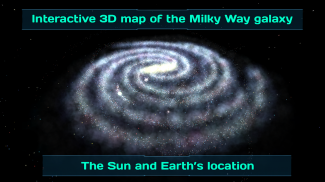
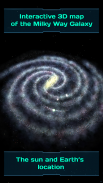
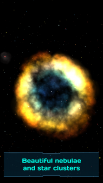
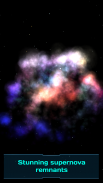
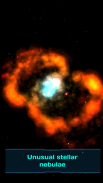
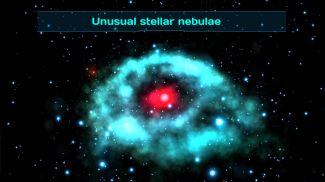
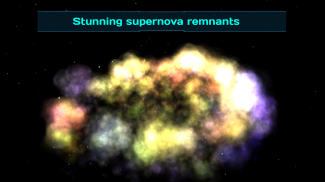


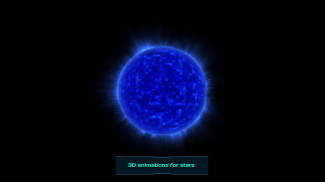
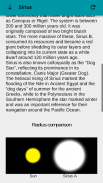
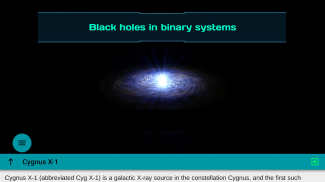
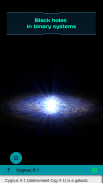
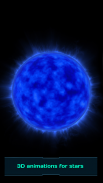
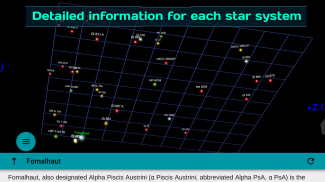
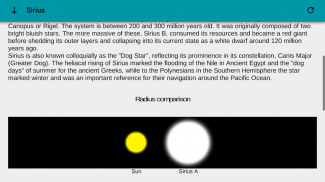
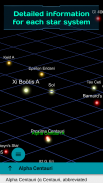
3D Galaxy Map Pro
3dgalaxymap.com
توضیحات 3D Galaxy Map Pro
Explore the galaxy in a stunning three dimensional map based on NASA's artistic impression of the Milky Way galactic structure. Photos are taken by NASA spacecraft and ground based telescopes like Hubble Space Telescope, Chandra X-Ray, Herschel Space Observatory and the Spitzer Space Telescope.
Find out where our Sun - the Solar System - is located in the Milky Way galaxy!
From the outskirts of the galaxy, in the Norma-Outer spiral arm to the galactic center's supermassive black hole Sagittarius A*, discover a galaxy full of amazing facts. Notable structures included: the Pillars of Creation, Helix Nebula, the Engraved Hourglass Nebula, the Pleiades, the Orion Arm (where the solar system and the Earth are located) with its Orion belt.
Check out neighboring dwarf galaxies such as Sagittarius and the Canis Major Overdensity, stellar streams as well as internal galactic components such as a variety of nebulae, star clusters or supernovae.
Ever wondered how far from Earth are the stars you see in the night sky? Or how far or close they are to each other? Now you can visualize those distances in 3D with a star map divided into 10 parsec sectors (cubes) or 32.62 light years, for an easier observation. Sector (0 ,0 ,0) is our home sector and Sol is the Solar System.
Features
★ An interactive 3D model of the Milky Way galaxy
★ Over 248.000 stars in the database from the European Space Agency's Hipparcos mission, the Gliese catalogue and parts of the ASCC - All Sky Compiled Catalogue
★ 14 black holes in binary systems
★ Search for stars by constellation, name, catalog or star type (color)
★ Star radius comparison with our own Sun
★ Detailed information on every star including its catalog designations, the system type (binary, ternary, quaternary system and so on), distance from the Sun and star radius
Explore space and get a little closer to our wonderful universe with this awesome astronomy app!
This interactive 3D map is excellent for teachers to use for instruction, and it is a great resource for students to explore the Milky Way galaxy and space as they learn more about the universe we live in.
An internet connection is necessary to access the online stellar database as well as the wiki information.
کاوش در کهکشان در یک نقشه سه بعدی خیره کننده بر اساس برداشت هنری ناسا از ساختار کهکشان راه شیری است. عکس ها توسط فضاپیمای ناسا و تلسکوپ زمینی مانند تلسکوپ فضایی هابل، پرتو ایکس چاندرا، رصدخانه فضایی هرشل و تلسکوپ فضایی اسپیتزر گرفته شده است.
پیدا کردن جایی که خورشید ما - منظومه شمسی - در کهکشان راه شیری قرار گرفته است!
از حومه کهکشان، در بازوی مارپیچی نورما-بیرونی به سیاه چاله مرکز کهکشان را کمان ای *، کشف یک کهکشان پر از حقایق شگفت انگیز. ساختارهای قابل توجه عبارتند از: ستون های آفرینش، سحابی هلیکس، حکاکی ساعت شنی سحابی، خوشه پروین، در بازوی شکارچی (که در آن منظومه شمسی و زمین در آن قرار دارد) با کمربند جبار آن است.
اتمام همسایه کهکشان های کوتوله مانند قوس و سگ بزرگ Overdensity، رودخانه ها ستاره ای و همچنین اجزای کهکشانی داخلی از قبیل انواع سحابی ها، خوشه های ستاره ای و یا به ابرنواختر است.
تا کنون فکر چگونه از زمین دور ستاره شما در آسمان شب دید؟ یا تا چه حد و یا در نزدیکی آنها به یکدیگر هستند؟ حالا شما می توانید آن فاصله در 3D با نقشه ستاره ای را به 10 بخش پارسک (مکعب) یا 32.62 سال نوری تقسیم شده است، برای مشاهده آسان تر تجسم. بخش (0، 0، 0) بخش خانه ما است و سل منظومه شمسی است.
به ویژگی های
★ یک مدل 3D تعاملی از کهکشان راه شیری
★ بیش از 248.000 ستاره در پایگاه داده از ماموریت آژانس فضایی اروپا ابرخس، کاتالوگ گلیز و بخش هایی از ASCC - همه کاتالوگ آسمان وارد شده
★ 14 سوراخ سیاه و سفید در سیستم های دوتایی
★ جستجو برای ستاره های صورت فلکی، نام، کاتالوگ و یا نوع ستاره (رنگ)
★ مقایسه شعاع ستاره با خورشید ما
★ اطلاعات دقیق در مورد هر ستاره از جمله اضافه کردن کاتولوگ شده تعیین نوع سیستم (باینری، سه تایی، سیستم چهارتایی و غیره)، فاصله از خورشید و شعاع ستاره
کاوش در فضا و کمی نزدیک تر به جهان شگفت انگیز ما با این برنامه نجوم بسیار جذاب!
این نقشه تعاملی 3D بسیار عالی است برای معلمان به استفاده برای آموزش، و آن را یک منبع بزرگ برای دانش آموزان برای کشف کهکشان راه شیری و فضا به عنوان آنها بیشتر در مورد جهان ما زندگی را یاد بگیرند.
اتصال به اینترنت برای دسترسی به پایگاه داده های ستاره ای آنلاین و همچنین اطلاعات ویکی ضروری است.

























